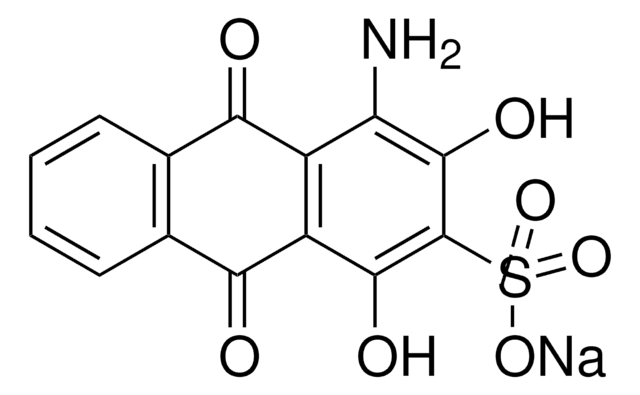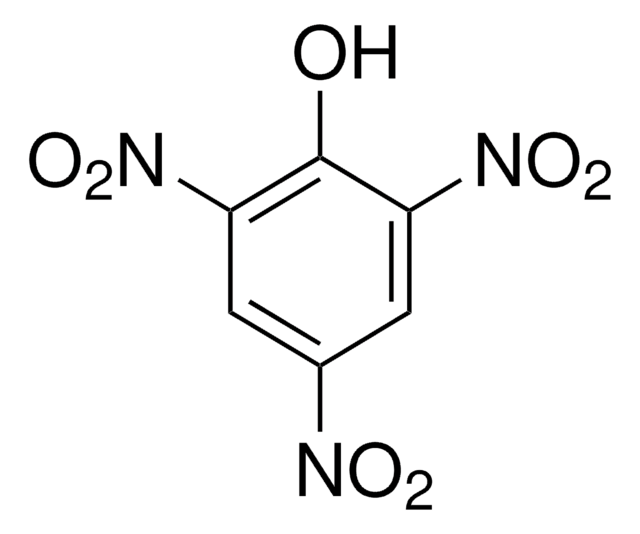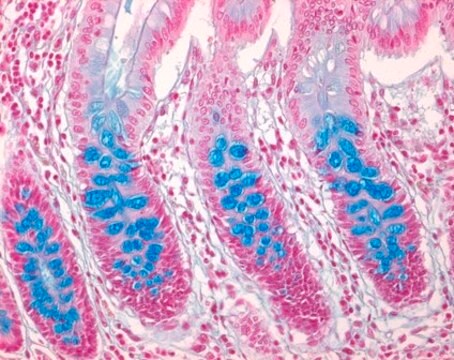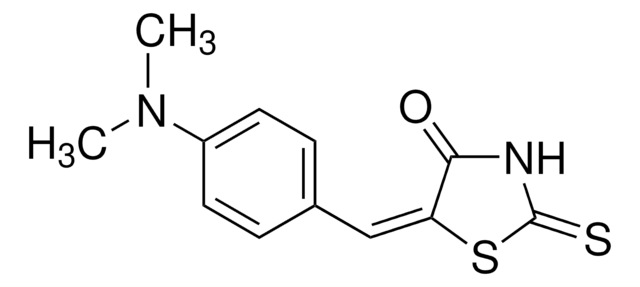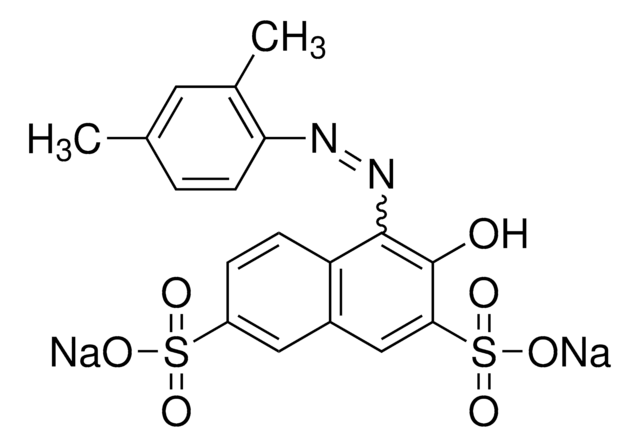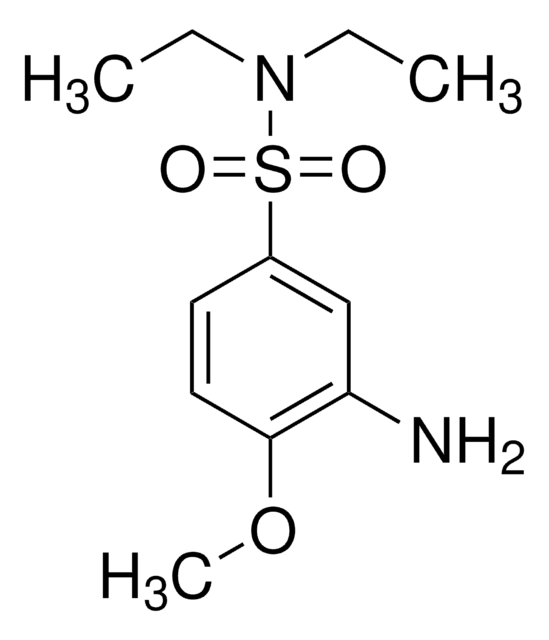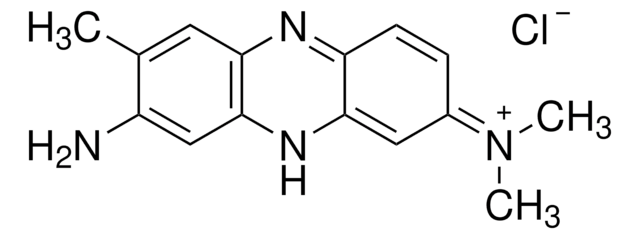60700
Nuclear Fast Red
for microscopy (Bot., Hist.)
Sinonimo/i:
4-Amino-9,10-dihydro-1,3-dihydroxy-9,10-dioxo-2-anthracenesulfonic acid sodium salt
About This Item
Prodotti consigliati
Grado
for microscopy (Bot., Hist.)
Forma fisica
powder
Solubilità
methanol: water (1:1): 0.01 g/10 mL, red
εmax
≥275 at 550-560 nm in DMSO
≥300 at 516-526 nm in DMSO
applicazioni
diagnostic assay manufacturing
hematology
histology
Temperatura di conservazione
room temp
Stringa SMILE
[Na+].Nc1c(O)c(c(O)c2C(=O)c3ccccc3C(=O)c12)S([O-])(=O)=O
InChI
1S/C14H9NO7S.Na/c15-9-7-8(12(18)14(13(9)19)23(20,21)22)11(17)6-4-2-1-3-5(6)10(7)16;/h1-4,18-19H,15H2,(H,20,21,22);/q;+1/p-1
IFSXZLJQEKGQAF-UHFFFAOYSA-M
Cerchi prodotti simili? Visita Guida al confronto tra prodotti
Descrizione generale
Applicazioni
- staining sperm and spermatids in semen
- identifying areas for PCR analysis in paraffin-embedded tissues
- nuclear counterstaining following immunostaining and silver staining
Azioni biochim/fisiol
Principio
Note legali
Codice della classe di stoccaggio
11 - Combustible Solids
Classe di pericolosità dell'acqua (WGK)
WGK 3
Punto d’infiammabilità (°F)
Not applicable
Punto d’infiammabilità (°C)
Not applicable
Dispositivi di protezione individuale
dust mask type N95 (US), Eyeshields, Gloves
Certificati d'analisi (COA)
Cerca il Certificati d'analisi (COA) digitando il numero di lotto/batch corrispondente. I numeri di lotto o di batch sono stampati sull'etichetta dei prodotti dopo la parola ‘Lotto’ o ‘Batch’.
Possiedi già questo prodotto?
I documenti relativi ai prodotti acquistati recentemente sono disponibili nell’Archivio dei documenti.
I clienti hanno visto anche
Il team dei nostri ricercatori vanta grande esperienza in tutte le aree della ricerca quali Life Science, scienza dei materiali, sintesi chimica, cromatografia, discipline analitiche, ecc..
Contatta l'Assistenza Tecnica.